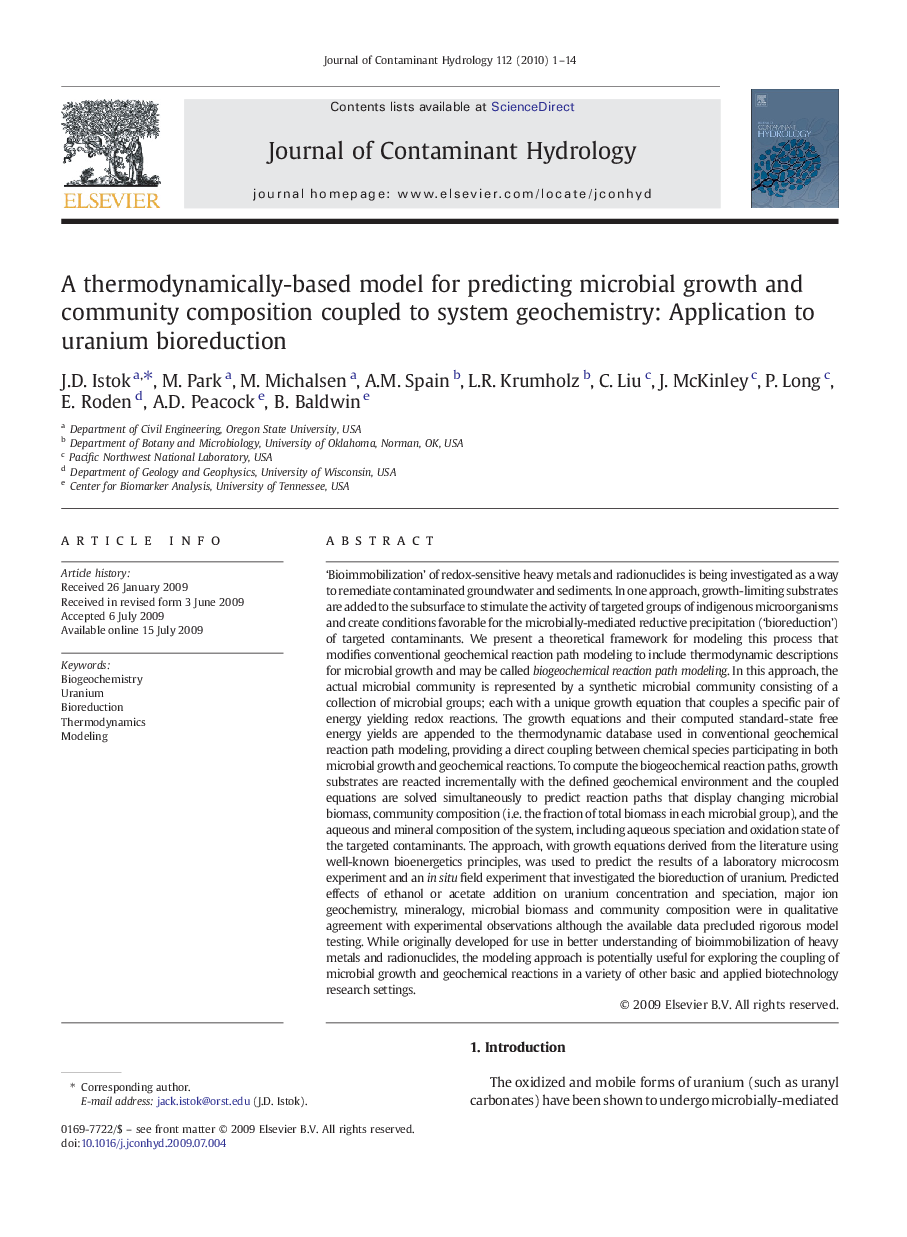| کد مقاله | کد نشریه | سال انتشار | مقاله انگلیسی | نسخه تمام متن |
|---|---|---|---|---|
| 4547098 | 1627090 | 2010 | 14 صفحه PDF | دانلود رایگان |

‘Bioimmobilization’ of redox-sensitive heavy metals and radionuclides is being investigated as a way to remediate contaminated groundwater and sediments. In one approach, growth-limiting substrates are added to the subsurface to stimulate the activity of targeted groups of indigenous microorganisms and create conditions favorable for the microbially-mediated reductive precipitation (‘bioreduction’) of targeted contaminants. We present a theoretical framework for modeling this process that modifies conventional geochemical reaction path modeling to include thermodynamic descriptions for microbial growth and may be called biogeochemical reaction path modeling. In this approach, the actual microbial community is represented by a synthetic microbial community consisting of a collection of microbial groups; each with a unique growth equation that couples a specific pair of energy yielding redox reactions. The growth equations and their computed standard-state free energy yields are appended to the thermodynamic database used in conventional geochemical reaction path modeling, providing a direct coupling between chemical species participating in both microbial growth and geochemical reactions. To compute the biogeochemical reaction paths, growth substrates are reacted incrementally with the defined geochemical environment and the coupled equations are solved simultaneously to predict reaction paths that display changing microbial biomass, community composition (i.e. the fraction of total biomass in each microbial group), and the aqueous and mineral composition of the system, including aqueous speciation and oxidation state of the targeted contaminants. The approach, with growth equations derived from the literature using well-known bioenergetics principles, was used to predict the results of a laboratory microcosm experiment and an in situ field experiment that investigated the bioreduction of uranium. Predicted effects of ethanol or acetate addition on uranium concentration and speciation, major ion geochemistry, mineralogy, microbial biomass and community composition were in qualitative agreement with experimental observations although the available data precluded rigorous model testing. While originally developed for use in better understanding of bioimmobilization of heavy metals and radionuclides, the modeling approach is potentially useful for exploring the coupling of microbial growth and geochemical reactions in a variety of other basic and applied biotechnology research settings.
Journal: Journal of Contaminant Hydrology - Volume 112, Issues 1–4, 1 March 2010, Pages 1–14